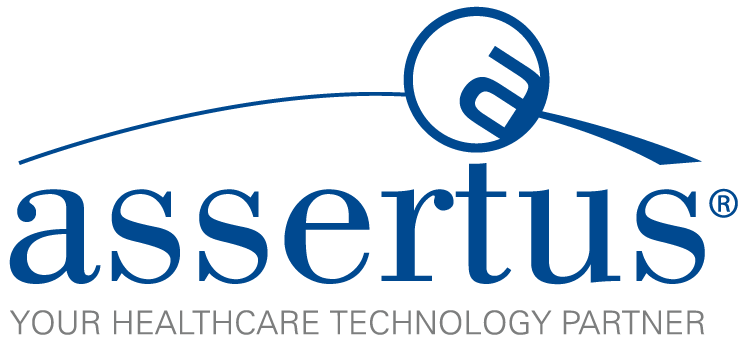Centers for Medicare & Medicaid Services (CMS) Recommendations Re-opening Facilities to Provide Non-emergent Non-COVID-19 Healthcare: Phase I The United States is experiencing an unprecedented public health emergency from the COVID-19 pandemic. Healthcare facilities in some areas are stretched to their limits of capacity, and surge areas have been needed to augment care for patients with COVID-19. To expand capacity to care for these patients and to conserve adequate staff and supplies, especially personal protective equipment (PPE), on March 18 the Centers for Medicare & Medicaid Services (CMS) recommended limiting non-essential care and expanding surge capacity into ambulatory surgical centers and other areas. However, CMS recognizes that at this time many areas have a low, or relatively low and stable incidence of COVID-19, and that it is important to be flexible and allow facilities to provide care for patients needing non-emergent, non-COVID-19 healthcare. In addition, as states and localities begin to stabilize, it is important to restart care that is currently being postponed, such as certain procedural care (surgeries and procedures), chronic disease care, and, ultimately, preventive care. Patients continue to have ongoing healthcare needs that are currently being deferred. Therefore, if states or regions have passed the Gating Criteria (symptoms, cases, and hospitals) announced on April 16, 2020, then they may proceed to Phase I. The Guidelines for Opening Up America Again can be found at the following link: https://www.whitehouse.gov/openingamerica/#criteria Maximum use of all telehealth modalities is strongly encouraged. However, for care that cannot be accomplished virtually, these recommendations — the first in a series of recommendations — may guide healthcare systems and facilities as they consider resuming in-person care of non-COVID-19 patients in regions with low incidence of COVID-19 disease. Non-COVID-19 care should be offered to patients as clinically appropriate and within a state, locality, or facility that has the resources to provide such care and the ability to quickly respond to a surge in COVID-19 cases, if necessary. Decisions should be consistent with public health information and in collaboration with state public health authorities. Careful planning is required to resume in-person care of patients requiring non-COVID-19 care, and all aspects of care must be considered — for example:
- Adequate facilities, workforce, testing, and supplies
- Adequate workforce across phases of care (such as availability of clinicians, nurses, anesthesia,pharmacy, imaging, pathology support, and post-acute care)
The following recommendations aim to give healthcare facilities some flexibility in providing essential nonCOVID-19 care to patients without symptoms of COVID-19 in regions with low incidence of COVID-19. Healthcare systems or clinicians have flexibility to re-start clinically necessary care for patients with nonCOVID-19 needs or complex chronic disease management requirements in accordance with the following general considerations:
General Considerations
- In coordination with State and local public health officials, evaluate the incidence and trends forCOVID-19 in the area where re-starting in-person care is being considered.
- Evaluate the necessity of the care based on clinical needs. Providers should prioritizesurgical/procedural care and high-complexity chronic disease management; however, selectpreventive services may also be highly necessary.
- Consider establishing Non-COVID Care (NCC) zones that would screen all patients for symptoms of COVID-19, including temperature checks. Staff would be routinely screened as would others who will work in the facility (physicians, nurses, housekeeping, delivery and all people who would enter the area).
- Sufficient resources should be available to the facility across phases of care, including PPE, healthy workforce, facilities, supplies, testing capacity, and post-acute care, without jeopardizing surge capacity.
Personal Protective Equipment
• Consistent with CDC’s recommendations for universal source control, CMS recommends that
healthcare providers and staff wear surgical facemasks at all times. Procedures on the mucous membranes including the respiratory tract, with a higher risk of aerosol transmission, should be done with great caution, and staff should utilize appropriate respiratory protection such as N95 masks and face shields.
- Patients should wear a cloth face covering that can be bought or made at home if they do not already possess surgical masks.
- Every effort should be made to conserve personal protective equipment.
https://www.cdc.gov/coronavirus/2019-ncov/hcp/ppe-strategy/index.html
Workforce Availability
- Staff should be routinely screened for symptoms of COVID -19 and if symptomatic, they should be tested and quarantined. Staff who will be working in these NCC zones should be limited to working in these areas and not rotate into “COVID-19 Care zones” (e.g., they should not have rounds in the hospital and then come to an NCC facility).
- Staffing levels in the community must remain adequate to cover a potential surge in COVID-19 cases.
Facility Considerations
- In a region with a current low incidence rate, when a facility makes the determination to provide in-person, non-emergent care, the facility should create areas of NCC which have in place steps to reduce risk of COVID-19 exposure and transmission; these areas should be separate from other facilities to the degrees possible (i.e., separate building, or designated rooms or floor with a separate entrance and minimal crossover with COVID-19 areas).
- Within the facility, administrative and engineering controls should be established to facilitate social distancing, such as minimizing time in waiting areas, spacing chairs at least 6 feet apart, and maintaining low patient volumes.
- Visitors should be prohibited but if they are necessary for an aspect of patient care, they should be pre-screened in the same way as patients.
Sanitation Protocols
- Ensure that there is an established plan for thorough cleaning and disinfection prior to using spaces or facilities for patients with non-COVID-19 care needs.
- Ensure that equipment such as anesthesia machines used for COVID-19 (+) patients are thoroughly decontaminated, following CDC guidelines.
Supplies
• Adequate supplies of equipment, medication and supplies must be ensured, and not detract for the community ability to respond to a potential surge.
Testing Capacity
- All patients must be screened for potential symptoms of COVID-19 prior to entering the NCC facility, and staff must be routinely screened for potential symptoms as noted above.
- When adequate testing capability is established, patients should be screened by laboratory testing before care, and staff working in these facilities should be regularly screened by laboratory test as well.
All facilities should continually evaluate whether their region remains a low risk of incidence and should be prepared to cease non-essential procedures if there is a surge. By following the above recommendations, flexibility can allow for safely extending in-person non-emergent care in select communities and facilities.


